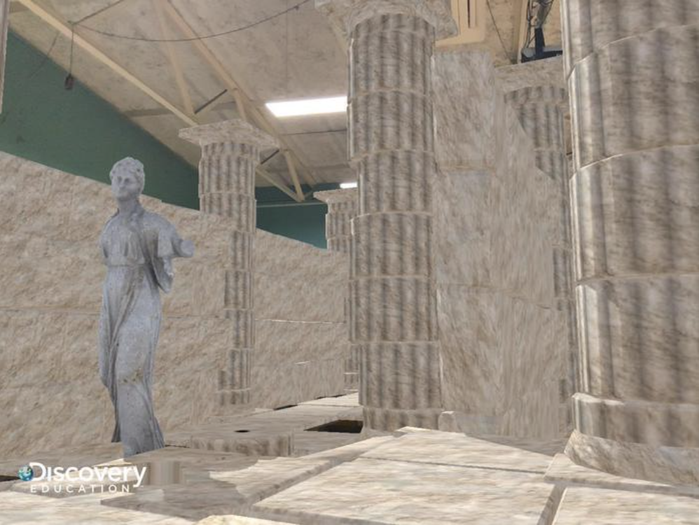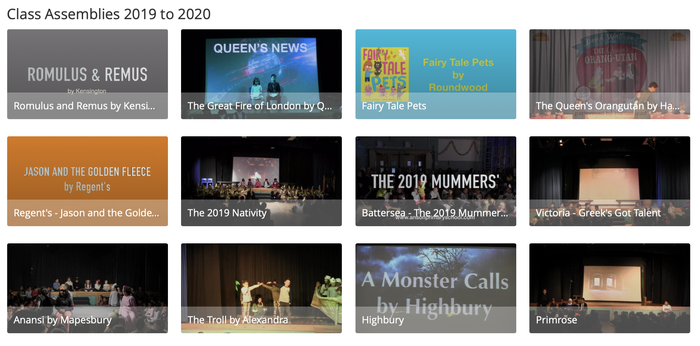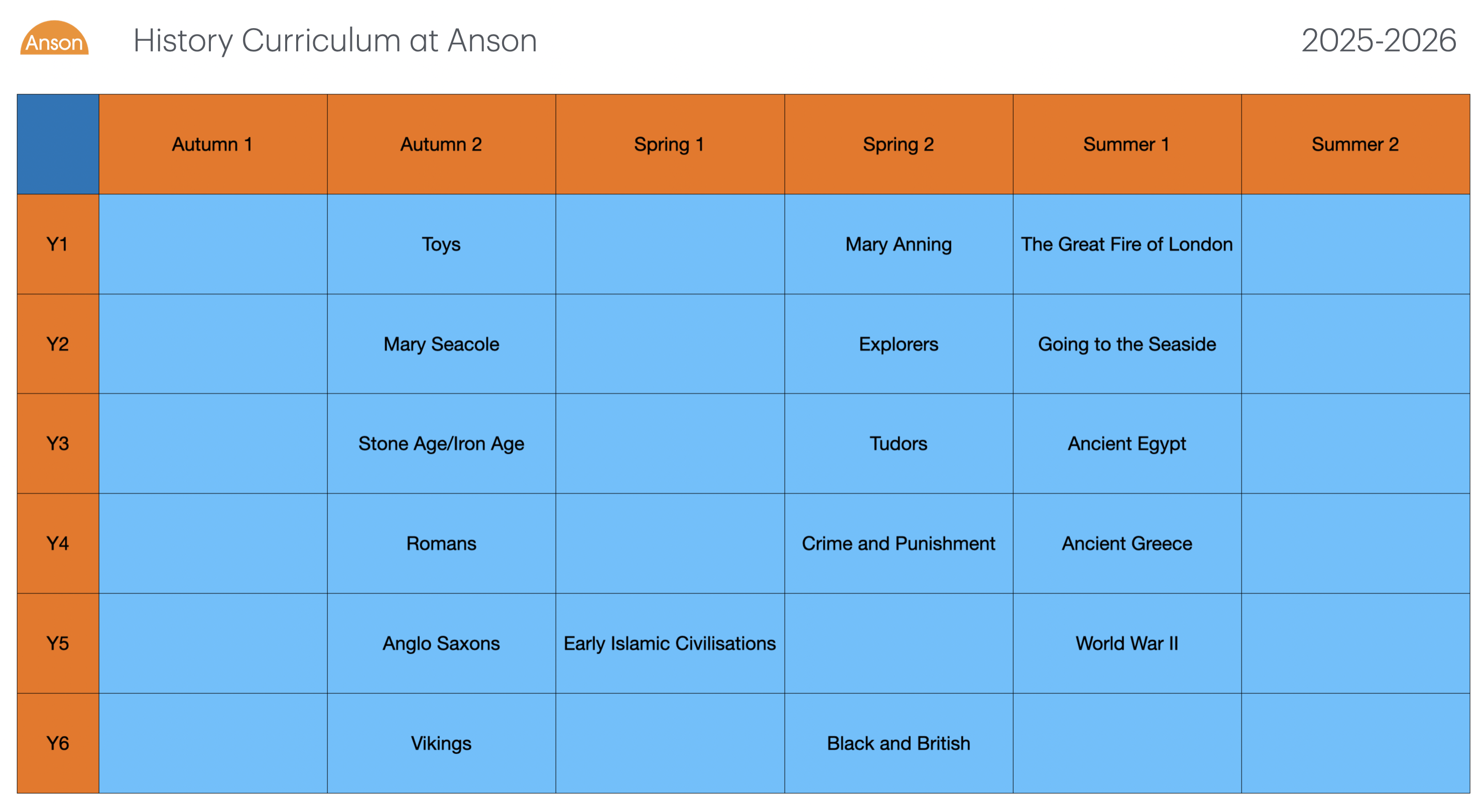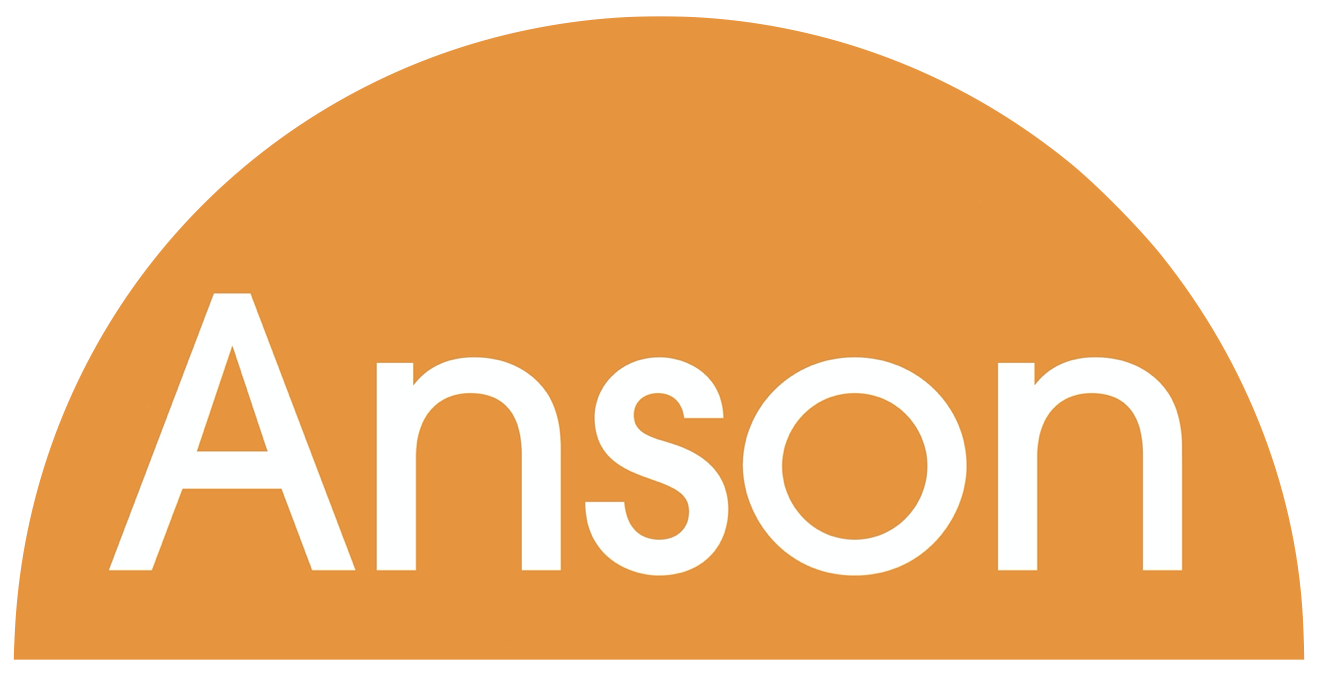History
The Intent
At Anson our history education helps pupils gain a coherent knowledge and understanding of Britain’s past and that of the wider world.
We inspire pupils to be curious about the past, to ask perceptive questions, explore evidence and develop opinions about the past.
History helps pupils to understand the complexity of people’s lives and so we work hard to embed the figures and texts into the curriculum that allow the children to see themselves in the curriculum. This rich multi-cultural approach embraces the way every culture has an impact on history.
We also try to reach out and touch history. We achieve this through visiting key sites in London. Whether Year One are learning about the Great Fire of London and visiting St. Paul's Cathedral or children in Year 3 are drawing Egyptian mummies in The British Museum.
However, we are also creative and innovative in the ways we embed history across the curriculum including cutting edge uses of technology to connect pupils to the past.
As explorers of history we are curious and passionate learners. However, in order for us to go deeper, quicker, we give the children the facts they need and leave them at their fingertips on our bespoke history websites.
With the facts in place, our history explorers, develop a wide range of critical thinking skills, which enable them to understand the contested nature of knowledge and to distinguish between fact and subjectivity when it comes to reaching conclusions and making judgements about the past.
At Anson history is therefore:
- Inspiring as a subject which is enjoyed, met with creative responses and breeds confidence in our place in history.
- Logical, and broad and balanced in terms of the areas of subject content we have selected which reflect the guidance and the demands of the National Curriculum.
- Relevant in terms of the careful consideration that has been given to the selection of historical enquiries that extend the knowledge and understanding of pupils beyond 1066.
- A coherent narrative of British and World History so pupils gain a chronological understanding of the historical eras and events they are studying;
- Progressively more challenging from Years 1 through 6 both in terms of the complexity of the subject knowledge we want our pupils to acquire and also the critical thinking skills we support them to utilise to ensure they understand the significance of that knowledge
- Built upon and has continuity with the provision for history established in the Early Years Foundation Stage;
- Inclusive in terms of delivering the same curriculum to all of our pupils irrespective of specific learning needs or disabilities and adapting our teaching where necessary through, for example, in class support, providing different learning environments, alternative learning activities and assessment outcomes;
- Rich in historical vocabulary.

The innovative Implementation
We use augmented reality to bring history to life, whether this is exploring a Roman villa, an Egyptian landscape or watching a Plesiosaurus swimming. The ability to place children inside history means we can drive up the understanding of the period, increase oracy as we describe what we can see and improve writing as a result.
The image shows a Roman villa built inside our school hall. Pupils can record themselves exploring the villa and asking questions about the artefacts they discover.
Importantly this kind of activity can also achieve our aims of children wanting to explore history and develop an inquisitive, questioning nature. We aim to ensure children become source-finders and source-challengers in their education. They are encouraged to find multiple sources of information, explore the stories from the past with a critical-eye and use modern resources such as the Internet and film to consider who is telling the stories of our past.

Our history work is embedded across the curriculum. This means that we can explore history through art, music or drama as well as the core subject areas.
At Anson, moments in history are also told through stories on the stage and film.

Our history through drama also sees showcases such as the story of Rome, the history of Ancient Greece or the Great Fire of London performed on the stage. This kind of work allows us to ensure that history is a vehicle to be able to improve speech and language, understand stories and use technology to bring moments of history to life.

As part of the Anson Film Festival the children were challenged to reenact a moment from history using the power of film. This was a way to further engage children in research coupled with creativity to develop a love for learning about the past.
There were 15 films created covering a vast range of historical moments including, Captain Tom Moore, The Gunpowder Plot and the fall of the Berlin Wall.
Wednesday: The one where we went back in time
08/12/2020
As part of the Anson Film Festival the children were challenged to reenact a moment from history using the power of film. uMost accurate reenactment wins! This is the showcase of the 15 surprising films submitted during the festival. The winners will be announced on Friday after the final showcase.
Our history teaching and learning ensures that all pupils know and understand the history of these islands, how people’s lives have shaped this nation and how Britain has influenced and been influenced by the wider world. We also ensure the following:
- Teachers have identified the key knowledge and skills of each unit and theses are mapped across the school, ensuring that knowledge builds progressively and that children develop skills systematically.
- We have an enquiry-led, knowledge-rich and skills-based approach to developing young historians;
- Existing knowledge is checked at the beginning of each topic. This ensures that teaching is informed by the children’s starting points;
- Tasks are selected and designed to provide appropriate challenge to all learners, in line with the school’s commitment to inclusion;
- Throughout the topic key knowledge is reviewed using online quizzes and assessments with consolidation as necessary;
- Cross curricular outcomes in History are specifically planned for;
- Children are given opportunities, where possible, to study artefacts, leading to enquiry, investigation and interpretation;
- Children are encouraged to discover links and connections to the history they learn and the wider community and locality;
- Educational visits and visitors enrich the learning experiences of all children;
- Children have access to our website for each topic which details some key information, dates and vocabulary to support children in their acquisition of knowledge and as a reference document;

The Impact
Children at Anson love history. They embrace the joy of exploring the past and are confident in the way they speak about history. They are creative at school, and beyond the classroom, in the ways they capture history and present it to their peers or the school community. Importantly they understand the past and use this to inform their present and the way they may act in the future.
History Curriculum 2025-2026

